New York, John F.Kennedy (JFK/KJFK) NY, USA
| IATA: JFK – ICAO: KJFK – FAA: JFK | |||
|---|---|---|---|
| Summary | |||
| Airport type | Public, John F. Kennedy International Airport, originally known as Idlewild Airport, is an international airport . It is the busiest international air passenger gateway to the United States and is also the leading freight gateway to the country by value of shipments, The airport is named after John F. Kennedy, the 35th President of the United States. | ||
| Owner | City of New York | ||
| Operator | Port Authority of New York and New JerseyThe airport is operated by the Port Authority of New York and New Jersey, which also manages the two other major airports in the New York metropolitan area, Newark Liberty and LaGuardia, | ||
| Serves | New York City | ||
| Location |    New York City New York City | ||
| Hub for | |||
| Fact. | JFK is the top international air passenger gateway to the United States and is also the leading freight gateway to the country by value of shipments. Of these, JFK is the largest. It is the base of operations for JetBlue Airways and is also a major international gateway hub for Delta Air Lines and American Airlines. Over the years many illustrious US airlines made the airport a major hub, including Pan Am, TWA, Eastern, National, Tower Air, and Flying Tiger Line. | ||
| Coordinates |  | ||
| Website | [1] | ||
| Runways | |||
| Direction | Length | Surface | |
| ft | m | ||
| 4L/22R | 11,351 | 3,460 | Asphalt/Concrete |
| 4R/22L | 8,400 | 2,560 | Asphalt |
| 13L/31R | 10,000 | 3,048 | Asphalt |
| 13R/31L | 14,572 | 4,442 | Asphalt/Concrete |
| Helipads | |||
| Number | Length | Surface | |
| ft | m | ||
| H1 | 60 | 18 | Asphalt |
| H2 | 60 | 18 | Asphalt |
| H3 | 60 | 18 | Asphalt |
| H4 | 60 | 18 | Asphalt |
| Statistics (2008) | |||
| Aircraft operations | 471,482 | ||
| Enplanements (FAA) | 23,601,779 | ||
| Passengers (ACI) | 47,807,816 | ||
Inside the old main terminal behind the windows or inside the plane on TWY![]() DSp Pictures
DSp PicturesYear Minolta Spot location Film Scan 1980's 
29
The TWA Flight Center, now Terminal 5, also opened in 1962. Designed by Eero Saarinen, it was sculpted as an abstract symbol of flight. It is considered one of the most architecturally distinguished airport terminal designs in the world. With the demise of TWA, however, it is no longer in use. The main building will be kept as a part of a new Terminal 5 building built by JetBlue

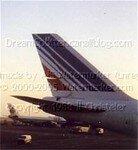
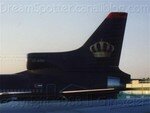
JFK's outbound international travel accounted for 17% of all U.S. travelers who went overseas in 2004, the largest share of any U.S. airport. In 2000, JFK handled an average of about 50,000 international passengers each day. The JFK-London Heathrow route is the leading U.S. international airport pair with over 2.9 million passengers in 2000.
Other top international destinations from JFK are Paris, Frankfurt, and Tokyo. Nearly 100 airlines from over 50 countries operate regularly scheduled flights from JFK. Although JFK is known for its historical role as an international gateway airport for the United States, it also handles a large number of domestic flights
Construction of the airport began in 1942 with modest ambitions — approximately $60 million were spent for its construction, but only 1,000 acres (4 km²) of land on the site of the Idlewild golf course were earmarked for use, which provided the airport's original commonly-used though unofficial name, Idlewild Airport. The airport is operated by the Port Authority of New York and New Jersey, under a 1947 lease from the City of New York. The airport saw its first commercial flight on July 1, 1948. It was dedicated as "New York International Airport" on July 31 of that same year, although the name "Idlewild" remained in common use and the official IATA airport code was IDL. It is estimated that JFK international provides some $6.6 billion of economic activity and 207,000 jobs in the New York metropolitan region today
The supersonic Concorde, operated by Air France and British Airways, provided scheduled trans-Atlantic supersonic service to JFK from 1977 until 2003, when Concorde was retired by both carriers. JFK had the most Concorde operations annually of any airport in the world.
The airport was renamed John F. Kennedy International Airport in 1963, one month after the assassination of President John F. Kennedy. The airport received the new IATA airport code of KJFK, and since then the airport has become widely referred to by the abbreviation "JFK".
Until the construction of the International Arrivals Building in 1957, the Temporary Terminal was the sole terminal. The growing popularity and advantages of commercial air travel made the expansion of the airport a major need owing to New York's importance as a major center of international commerce and tourism. Another 4,000 acres (16 km²) were allocated to the airport and 8 new terminals were constructed from 1958 to 1971, each designed by one of the airport's main airlines. which become the hub of major airlines such as Pan Am, TWA and the National Airlines.
Two pairs of parallel runways, four in all, surround the airport's central terminal area: 4L-22R, 4R-22L, 13L-31R and 13R-31L. Runway 13R-31L is the second longest commercial runway in North America, at a length of 14,572 ft (4,441 m).
The Air Traffic Control Tower, constructed on the ramp-side of Terminal 4, began full FAA operations in October 1994 and is 321 feet tall. An Airport Surface Detection Equipment (ASDE) radar unit sits atop the tower. A gas-fired electric cogeneration plant generates electricity for the airport, with an output of about 90 megawatts. It uses thermal energy from the capture of waste heat to heat and cool all of the passenger terminals and other facilities in the central terminal area.
JFK has over 25 miles of taxiways to move aircraft in and around the airfield. The standard width of these taxiways is 75 feet, with 25-foot heavy-duty shoulders and 25-foot erosion control pavements on each side. The taxiways have centerline lights and are generally of asphalt concrete composition 15 to 18 inches thick. An illuminated sign system provides directional information for taxiing aircraft.
Terminal 5, also known as the TWA Flight Center, is closed while undergoing reconstruction to become the new terminal for JetBlue Airways.
Terminal 7 was built for BOAC and Air Canada in the early 1970s. In 1997, the Port Authority entered an agreement with British Airways to expand the terminal. The renovated terminal has 12 gates
![]() DSp Pictures
DSp PicturesYear Minolta Spot location Film Scan 1989 
16
Inside the old terminal of PanAm
The Worldport (Pan Am), now Terminal 3, opened in 1962. It featured a large, elliptical roof suspended by 32 sets of radial posts and cables. The roof extended far beyond the base of the terminal and covered the passenger loading area. It was one of the first airline terminals in the world to feature Jetways that connected to the terminal and that could be moved to provide an easy walkway for passengers from the terminal to a docked aircraft, rather than having to board the plane outside via airstairs.
The original Terminal 1, built as a hub for Eastern Airlines, was demolished, a new Terminal 1 was opened in 1998, 50 years after the opening of JFK.
Terminal 3, built as the Worldport in 1960 for Pan American, and substantially expanded for the introduction of the 747 in 1970, has 17 gates.

Aircraft service facilities include seven aircraft hangars, an engine overhaul building, a 32-million gallon aircraft fuel storage facility, and a truck garage.
JFK is the nation’s busiest international air freight gateway by value of shipments and the second busiest overall by value including all air, land and sea U.S. freight gateways. Over 21% of all U.S. international air freight by value and 11% by tonnage moved through JFK in 2003

remember
History - Construction began in April 1942, when the City of New York contracted for the placing of hydraulic fill over the marshy tidelands on the site of Idlewild Golf Course. Planned at first for 1,000 acres, the airport grew to five times that size. First commercial flights began on July 1, 1948. The airport was formally dedicated as New York International Airport on July 31, 1948. It was re-dedicated on December 24, 1963 as John F. Kennedy International Airport, following action of the Mayor and Council of the City of New York, and a resolution of the Commissioners of the Port Authority
Construction
JFK Airport was originally known as Idlewild Airport (IATA: IDL, ICAO: KIDL, FAA LID: IDL) after the Idlewild Golf Course that it displaced. The airport was originally envisioned as a reliever for LaGuardia Airport, which was already showing signs of insufficient capacity in the late 1930s. Construction began in 1943; approximately $60 million was initially spent, but only 1,000 acres (400 ha) of land on the site of the Idlewild golf course were earmarked for use.
The project was renamed Major General Alexander E. Anderson Airport in 1943 after a Queens resident who had commanded a Federalized National Guard unit in the southern United States and who had died in late 1942. In March 1948, the New York City Council again changed the name of the airport to New York International Airport, Anderson Field, but the name "Idlewild" remained in common use until 1963.
The Port Authority of New York and New Jersey leased the airport property from the City of New York in 1947 and maintains this lease today. The first commercial flight at the airport was on July 1, 1948; the opening ceremony was attended by President Harry Truman. Upon opening Idlewild, the Port Authority cancelled foreign airlines' permits to use LaGuardia, effectively forcing them to move to the new airport.
The airport was renamed John F. Kennedy International Airport in 1963, one month after the assassination of President John F. Kennedy.
Development
The Port Authority originally envisioned a single 55-gate terminal for the airport, but the major airlines of the time did not agree with this plan, arguing that the terminal would be far too small for future traffic. Architect Wallace Harrison then designed a master plan under which each major airline at the airport would be given its own space to develop its own terminal design. This scheme made construction more practical, made terminals more navigable and introduced incentives for airlines to compete with each other for the best design. The revised master plan met airline approval in 1955.
- The International Arrivals Building was the first new terminal project at the airport. It was designed by Skidmore, Owings & Merrill and featured perpendicular "finger" piers to allow a greater number of aircraft to park, a major design innovation at the time.
- United Airlines opened Terminal 9, a Skidmore design similar to that of the IAB, in October 1959. Eastern Airlines opened its Chester L. Churchill-designed Terminal 1 one month later.
- American Airlines opened its Terminal 8 in 1960. The terminal was designed by Kahn and Jacobs and became known for its 317 feet (97 m) stained glass facade designed by Robert Sowers, which was the largest stained glass installation in the world until 1979. The facade was removed in 2007 as the terminal was demolished to make room for the new Terminal 8; American cited the prohibitive cost of removing the enormous installation.
- Pan American World Airways opened the Worldport (now Terminal 3) in 1960. It featured a large, elliptical roof suspended by 32 sets of radial posts and cables; the roof extended 114 feet (35 m) beyond the base of the terminal to cover the passenger loading area. It was one of the first airline terminals in the world to feature Jetways that connected to the terminal and that could be moved to provide an easy walkway for passengers from the terminal to a docked aircraft, rather than having to board the plane outside via airstairs, which descend from an aircraft, via truck-mounted mobile stairs, or via wheeled stairs.
- Trans World Airlines opened the TWA Flight Center in 1962, designed by Eero Saarinen with a distinctive winged-bird shape. With the demise of TWA in 2001, the terminal remained vacant until 2005 when JetBlue Airways and the Port Authority of New York and New Jersey (PANYNJ) financed the construction of a new 26 gate terminal partially encircling the Saarinen building. Called now Terminal 5 (or simply T5), the new terminal opened October 22, 2008. T5 will be connected to the Saarinen central building through the original passenger departure-arrival tubes which connected the building to the outlying gates; the Port Authority is working on renovations of the remaining original Saarinen terminal, also known as the head house.
- Northwest Airlines, Braniff International and Northeast Airlines opened a joint terminal in 1962.
- National Airlines opened the Sundrome (now Terminal 6) in 1970. The terminal was designed by Pei Cobb Freed & Partners. In 2001, United Airlines planned to redevelop this terminal and the TWA Flight Center as a new United terminal, but the airline later reduced its operation at JFK and abandoned plans for a future JFK hub. Terminal 6 was used by JetBlue Airways from 2001 through 2008 and vacated when JetBlue moved to Terminal 5.
JFK was designed to accommodate aircraft no larger than a Douglas DC-6 and had to be significantly modified in the late 1960s to accommodate Boeing 747s.
By the mid-1980s, JFK had overtaken Newark International Airport to become New York City's busiest airport. The supersonic Concorde, operated by Air France and British Airways, provided scheduled trans-Atlantic supersonic service to JFK from 1977 until 2003, when Concorde was retired by both carriers. JFK had the most Concorde operations annually of any airport in the world.
JFK is currently undergoing a $10.3 billion redevelopment. The airport began construction of the AirTrain JFK rapid transit system in 1998; completed in December 2003, the rail network links each airport terminal to New York City subways and regional commuter trains at Howard Beach and Jamaica, Queens. The airport opened a new Terminal 1 in 1998, and the $1.4 billion replacement for the International Arrivals Building, Terminal 4, opened in 2001. Construction has been completed on JetBlue Airways's new Terminal 5, which incorporates the historic landmark TWA FlightCenter terminal, while Terminals 8 and 9 are undergoing redevelopment as one single Terminal 8 for the American Airlines hub. In 2008 the Port Authority Board of Commissioners approved a $20 million planning study for the redevelopment of Terminals 2 and 3, the hub of Delta Air Lines.
On March 19, 2007, JFK became the first airport in the United States to receive the Airbus A380 with passengers aboard. The route-proving flight with more than 500 passengers was operated jointly by Lufthansa and Airbus and arrived at Terminal 1. On August 1, 2008, JFK received the first regularly-scheduled commercial A380 flight to the United States, operated by Emirates on its New York-Dubai route using Terminal 4. This service was suspended indefinitely in 2009, due to poor passenger demand.
[Terminal 1
The original Terminal 1, built as a hub for Eastern Airlines, was demolished.
The current Terminal 1 was opened in 1998, 50 years after the opening of JFK, at the direction of the Terminal One Group, a consortium of four key operating carriers: Air France, Japan Airlines, Korean Air and Lufthansa. This partnership was founded after the four airlines reached agreement that existing international carrier facilities were inadequate for their needs.
Terminal 1 has 11 gates.
Terminal 2 was opened in 1962 as the home of Northeast Airlines, Braniff and Northwest Airlines. After the demise of Northeast Airlines and Braniff the building was taken over by Delta Air Lines. Delta hopes to merge its two terminals at JFK (2 & 3) into a single modern terminal in the future.
Terminal 2 has 7 jetway-equipped gates (20-22, 26-29) and 17 stands for Delta Connection carriers (23A-H, 23J, 25K-N, 25P-S).
Terminal 3 was built as the Worldport in 1960 for Pan American, and substantially expanded for the introduction of the 747 in 1970. Delta Air Lines currently uses the entire terminal, and has a connector to Terminal 2, its other terminal at JFK. Terminal 3 has 16 jetway equipped gates: 1-10, 12, 14-18 with two hardstand gates (Gate 11) and a helipad on Taxiway 'KK'
Terminal 4, the international terminal, is able to handle the Airbus A380 and was developed by LCOR, Inc and is managed by the Schiphol Group. It was the first airport terminal in the United States to be managed by a foreign airport operator. Terminal 4 is the major gateway for International Arrivals at JFK. Opened in 2001, the new 1,500,000-square-foot (139,000 m2) building was built at a cost of $1.4 billion and replaced JFK's old International Arrivals Building, or simply IAB, which opened in 1957.
Terminal 4 has 17 gates in two concourses: A2-A7, B20, B22-B31.
Concourse A has six gates, numbered A2-A7. Concourse B has eleven gates, numbered B20-B31, excluding B21. As Terminal 4 was built during the construction of the AirTrain, the AirTrain station was built inside the terminal building. Other AirTrain stations are built across from terminal buildings. Terminal 4’s expansive shopping mall offers a wide range of retail options before security so passengers and their families can enjoy shopping and dining together. Four chapels are located on the fourth floor (departure level).
Terminal 5, also known as the TWA Flight Center, is the new home of JetBlue Airways. The active 26 gate terminal sits behind the Eero Saarinen built terminal has been branded by JetBlue as T5. The Saarinen building is closed for refurbishment, it is unclear when the building will reopen and what purpose it will have. Terminal 5 has 26 gates: 1-12, 14-27
Terminal 6, built in 1970 as the National Airlines Sundrome designed by I. M. Pei, has 14 gates. On June 1, 2006, JetBlue opened a temporary terminal complex that added seven gates onto the terminal and increased the capacity for more flights. Terminal 6 is now closed. It had 14 gates and is the former home of JetBlue Airways. United Airlines used it for its transcontinental flights until Jetblue came to the terminal. Its future is unknown at this point, but it has been confirmed that the temporary gates will be demolished.
Terminal 7 was built for BOAC and Air Canada in the early 1970s. It is currently owned and operated by British Airways. In 1997, the Port Authority entered an agreement with British Airways to expand the terminal. The renovated terminal has 12 gates. On May 21, 2008, British Airways announced that it would undertake a $30 million, 18-month-long project to enhance its premium ground facilities at the terminal. Scheduled to launch in June 2009, the project will involve creation of a new premium check-in "pavilion" with dedicated curbside drop-off for FIRST and Executive Gold Club customers, an enhanced and dedicated check-in area for Club World and Executive Club Silver customers and renovation of Terraces, First Class and Concorde Lounges.
In 1999, American Airlines began an eight-year program to build the largest passenger terminal at JFK to replace terminals 8 and 9. The new terminal was built in four phases, which involved the construction of a new midfield concourse, demolition of the old Terminal 9, and finally demolition of the old Terminal 8. It opened in stages between 2005 and its "official" opening in August 2007.
The terminal is about 50% larger than Madison Square Garden. It offers dozens of retail and food outlets, 84 ticket counters, 44 self-service kiosks, 10 security lanes and a U.S. Customs and Border Protection facility that can process more than 1,600 people an hour. It has two American Airlines Admirals Clubs and a Flagship Lounge for premium class passengers.
JFK has been the site of several notable aviation accidents and incidents.
- December 18, 1954 - a Linee Aeree Italiane Douglas DC-6 crashed on its fourth approach attempt to land at Idlewild (the former name of JFK), after circling for 2.5 hours. 26 of the 32 passengers on board were killed.
- November 10, 1958 - Vickers Viscount, CF-TGL of Trans-Canada Air Lines was destroyed by fire after it was struck by Lockheed L-749 Super Constellation N6503C of Seaboard & Western Airlines which had crashed on take-off.
- December 16, 1960 - a United Airlines Douglas DC-8 collided with a TWA Super Constellation on approach to the airport; the United jet crashed in a Brooklyn neighborhood, the TWA plane on Staten Island, killing 127 people on board and five on the ground.
- March 1, 1962 - American Airlines Flight 1 , a Boeing 707 crashed on takeoff from Idlewild after its rudder separated from the tail. All 95 passengers and 12 crew members were killed.
- November 30, 1962 - an Eastern Air Lines Douglas DC-7 crashed into the ground during a missed approach.
- February 8, 1965 - an Eastern Air Lines Douglas DC-7 crashed off Jones Beach after takeoff when the pilots found themselves on an apparent collision course with an inbound Pan Am Boeing 707 and made evasive maneuvers.
- 1967 - The Air France Robbery targeted $420,000 in cash brought in as Air France cargo.
- September 8, 1970 - a Trans International Airlines DC-8-63CF ferry flight to Dulles International Airport crashed on takeoff from runway 13R, killing all 11 crewmembers on board. The DC-8 freighter started rotating in a nose-high attitude 1,500 feet (460 m) into the take-off. After becoming airborne at 2,800 feet (850 m) down the runway, the aircraft climbed to about 300–500 feet, rolled 20 degrees to the left, crashed and caught fire. The loss of pitch control was caused by the entrapment of a pointed, asphalt-covered object between the leading edge of the right elevator and the right horizontal spar web access door in the aft part of the stabilizer.
- December 1, 1974 - Northwest Orient Flight 6231 a Boeing 727 chartered to pick up the Baltimore Colts in Buffalo crashed near Thiells, New York. The flight departed John F. Kennedy International Airport with only the cockpit crew onboard. The pitot heat was not turned on and the tube iced over during climb out making the airspeed readings unreliable. The plane stalled passing 23,000' and the crew was unable to regain control. All 3 crewmembers onboard were killed.
- June 24, 1975 - Eastern Air Lines Flight 66, a Boeing 727 on final approach from New Orleans, crashed into the runway lights short of runway 22L, killing 112 passengers and crew. The cause of the crash was wind shear during a heavy thunderstorm.
- December 11, 1978 - The Lufthansa heist targeted over $5 million in cash and jewels on a Lufthansa flight arriving from Germany; at the time, it was the largest cash robbery ever committed on American soil.
- January 25, 1990 - Avianca Flight 52, a Boeing 707-321B arriving from Bogotá and Medellin, crashed at Cove Neck, Long Island, after a missed approach at JFK and subsequently running out of fuel.
- July 30, 1992 - TWA Flight 843, a Lockheed L-1011 departing for San Francisco, aborted takeoff shortly after liftoff. There were no fatalities among the 280 passengers, although the aircraft was destroyed.
- November 12, 2001 - American Airlines Flight 587, an Airbus A300 crashed while en route to Santo Domingo in the Dominican Republic. During climb, the aircraft lost most of its vertical fin due to the co-pilot's overcontrol of the rudder while encountering wake turbulence, and crashed into the Belle Harbor neighborhood of Queens. The crash killed all 260 people on the plane and five people on the ground.
- On September 6, 2007, TAM Airlines Flight 8080 suffered a heavy landing due to the elevators not responding in the landing flare. An investigation revealed that #2 flight control primary computer did not match #1 and #3 computers, sending erroneous messages to the actuators for the elevators.
Other accidents and incidents involving JFK include:
- Sabena Flight 548 (1961), outbound from JFK, crashed while trying to land in Brussels, Belgium
- Eastern Air Lines Flight 401 (1972), outbound from JFK, crashed while trying to land in Miami, Florida
- Pan Am Flight 1736 (1977), originated from LAX and stopped at JFK, collided with another 747 at Tenerife
- LOT Polish Airlines Flight 007 (1980), outbound from JFK, crashed while trying to land in Warsaw, Poland
- Korean Air Lines Flight 007 (1983), originated from JFK, shot down by Soviet jet interceptors off the coast of Sakhalin after it strayed into prohibited Soviet airspace because of a navigational error
- Pan Am Flight 103 (1988), bound for JFK, with continued service to Detroit, exploded over Lockerbie, Scotland
- TWA Flight 800 (1996), outbound from JFK, exploded soon after takeoff, and crashed off the coast of Long Island
- Swissair Flight 111 (1998), outbound from JFK, crashed off the coast of Nova Scotia
- EgyptAir Flight 990 (1999), outbound from JFK, crashed off the coast of Nantucket
- Air France Flight 4590 (2000), a Concorde bound for JFK, crashed in Gonesse, France
- Korean Air Flight 85 (2001), bound for JFK on September 11, was escorted by fighter jets to Whitehorse International Airport during Operation Yellow Ribbon on fears it may have been hijacked. This was not the case; the plane was low on fuel, and according to a public affairs official at the airport, there was also a communication problem with the air crew. When the plane landed, witnesses reported that the Royal Canadian Mounted Police ordered the crew out at gunpoint. The entire incident was a misunderstanding caused by a malfunctioning transponder.
- JetBlue Airways Flight 292 (2005), was bound for JFK when the nose landing gear twisted 90 degrees to the right, perpendicular to the way the wheels normally face. The Airbus A320 had taken off from Bob Hope Airport in Burbank, California, and then made a successful emergency landing at Los Angeles International Airport. Of the 140 passengers and 5 crewmembers on board, no one was injured.


/https%3A%2F%2Fprofilepics.canalblog.com%2Fprofilepics%2F8%2F1%2F81057.jpg)
/https%3A%2F%2Fstorage.canalblog.com%2F20%2F39%2F97146%2F32300127_o.jpg)
/https%3A%2F%2Fstorage.canalblog.com%2F12%2F78%2F97146%2F30672854_o.jpg)
/https%3A%2F%2Fstorage.canalblog.com%2F26%2F90%2F97146%2F27985019_o.jpg)
/https%3A%2F%2Fstorage.canalblog.com%2F37%2F46%2F97146%2F27230276_o.jpg)
/https%3A%2F%2Fstorage.canalblog.com%2F33%2F59%2F97146%2F21981067_o.jpg)
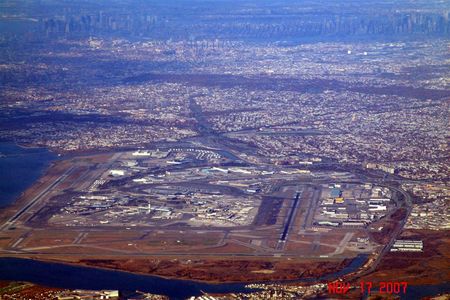

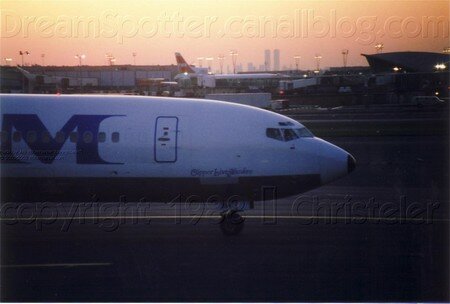
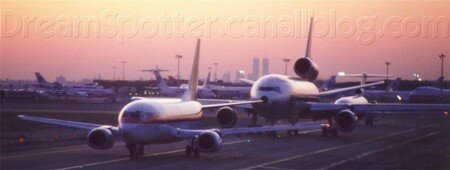





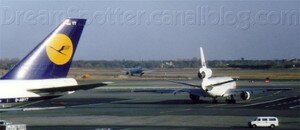




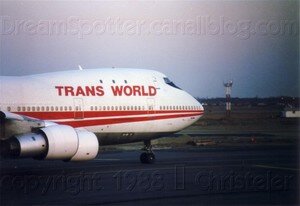


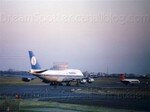




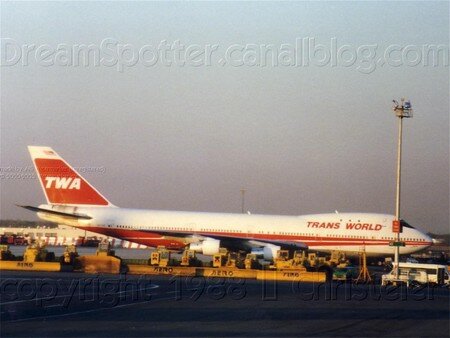



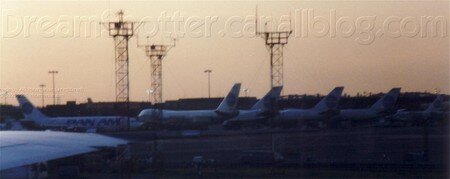







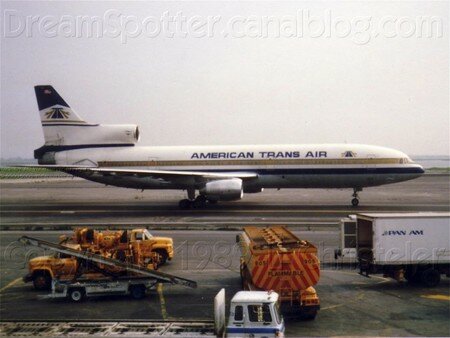



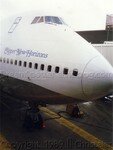


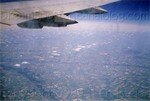






/http%3A%2F%2Fstorage.canalblog.com%2F14%2F46%2F97146%2F75254467_o.jpeg)
/http%3A%2F%2Fstorage.canalblog.com%2F85%2F19%2F97146%2F72040806_o.png)
/http%3A%2F%2Fstorage.canalblog.com%2F87%2F00%2F97146%2F53240861_o.jpg)
/http%3A%2F%2Fstorage.canalblog.com%2F53%2F59%2F97146%2F61252882_o.jpg)